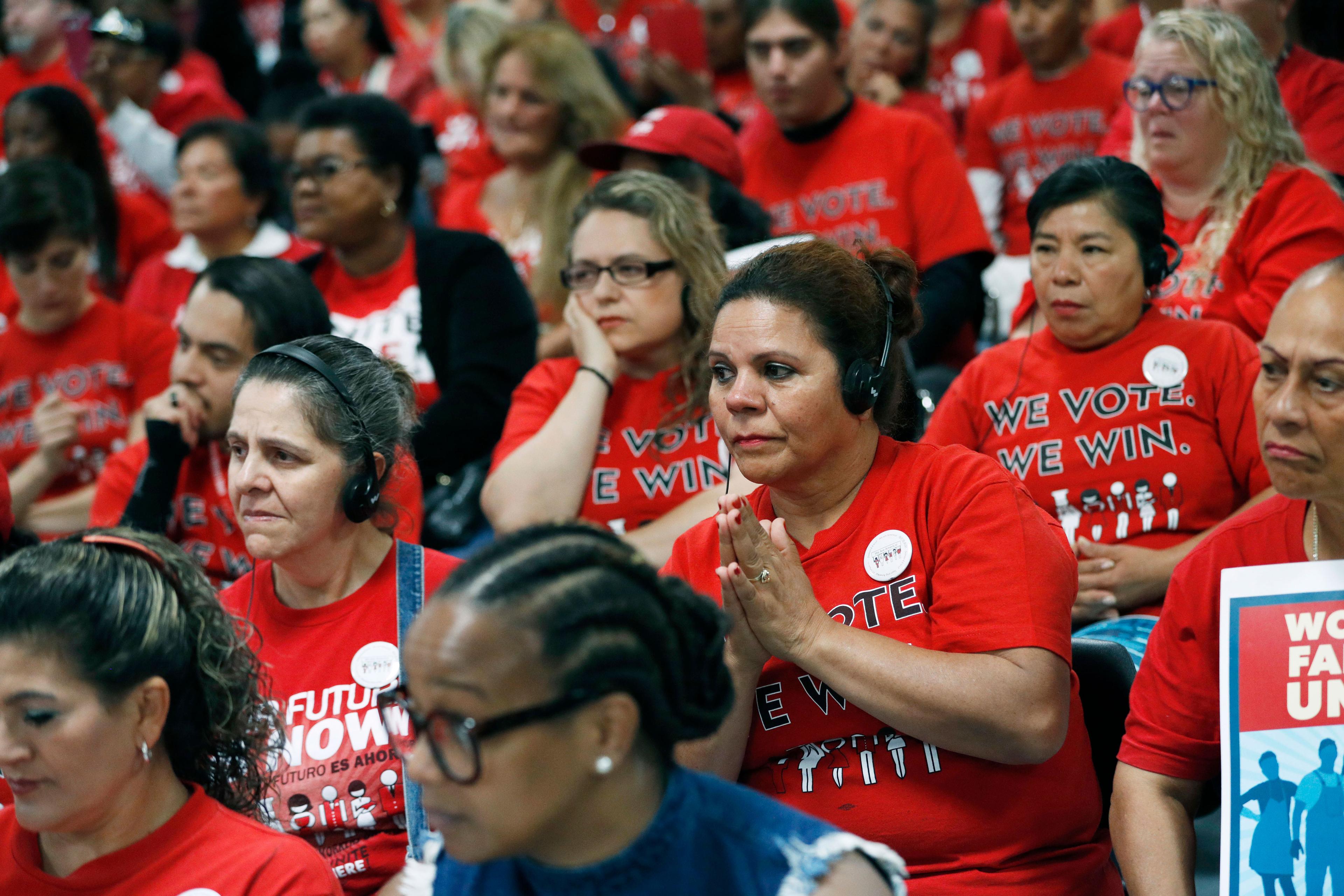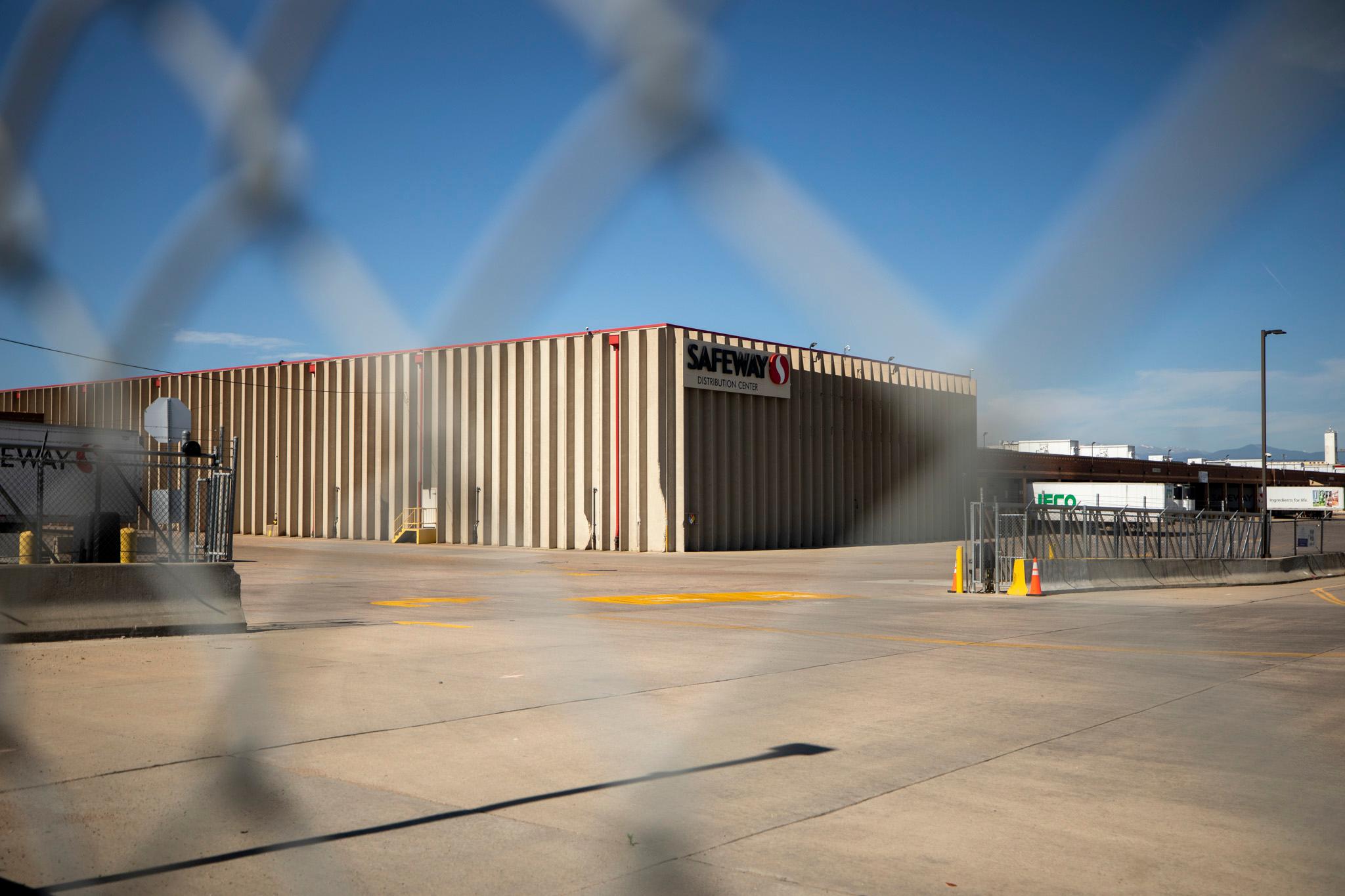

Patricia Lugo rattled off a string of fierce adjectives describing life under the Trump administration — “ugly,” ‘‘bad,” ‘‘terrible.”
She joined a cluster of other Latinos in a Las Vegas shopping center in listing grievances against the president that included referring to Mexican immigrants as rapists and separating parents from children at the border.
Lugo is determined to support Democrats as they fight back, but she’s alarmed that a handful of friends and family have given up on voting.
“They say it doesn’t do anything,” said Lugo, 56, a promoter for a footwear chain. “And it doesn’t matter who votes because (politicians) do whatever they want anyway.”
Trump rode to his improbable victory in 2016 by winning a troika of Rust Belt states where there are relatively few Latinos. This was supposed to be the election Latinos struck back.
- Need Some Ballot Assistance? Read The Colorado Voter’s Guide To The 2018 Election
Many Democrats presumed that Latinos, who are largely clustered in a handful of states, would be better-positioned to flex their muscles and punish the president for his actions and rhetoric targeting Latino immigrants — most recently when he pledged to send troops to the border to block a northbound caravan of Central American migrants.
Latinos had been poised to play a prominent role in several House races in California and Senate races in Florida and the southwest.
But as Election Day nears, polling shows it’s more affluent and predominantly white college-educated women with whom Democrats have made the most inroads, while Latinos haven’t fully turned against Trump and his Republican Party.
“Donald Trump is the most hostile president to Hispanics in American history, yet Donald Trump has between a 25 percent and 35 percent approval rating among some Hispanics — higher than 40 percent in Florida,” said Fernand Amadi, a Florida-based Latino pollster.
About 25 percent of Latino voters are reliable Republicans, but others seem willing to support the GOP amid the solid economy.
“From their perspective, this Trump’s crazy and a bigoted loudmouth, but we deal with people like this in every day of our lives,” Amadi said.
The relatively tepid showing for Democrats so far from some Latino voters was evident this month when the Democratic Congressional Campaign Committee, which supports House candidates, trimmed its financial support from candidates trying to oust Republican congressmen in one west Texas district and another in California’s Central Valley.
In Texas, polls indicate enough Latinos are sticking with Republican Sen. Ted Cruz that he is likely to fend off a challenge from Democratic Rep. Beto O’Rourke. And in Florida, Arizona and Nevada, Democrats remain neck-and-neck with Republicans in Senate races.
Still, there are positive signs for Democrats among Latinos.
Gil Cisneros, a former Naval officer and philanthropist, more than doubled Latino turnout when he won the June primary for a formerly GOP open House seat in Southern California. Democrats report initial signs that Latinos are requesting ballots at a higher clip in California — home to several competitive House races — and that early Latino voting is strong in a district in southern New Mexico that has long been held by the GOP.
Democrats predict there will be a significant bump in Latino turnout, but they’re not sure it’ll be enough.
The Democratic Congressional Campaign Committee is spending $25 million to reach out to Democratic voters who normally sit out midterms, including Latinos. Rep. Ben Lujan of New Mexico chairs the organization. Executive director Dan Sena says the group understands that Latinos need extra attention and candidates they can believe in.
“You can show up to vote against the president, but you also need a candidate who shares your values,” Sena said.
The politics of Latinos are diverse, ranging from older, GOP-leaning Cuban émigrés in Florida to newly naturalized Democratic-leaning Mexican immigrants in the Southwest, to families in Texas, New Mexico and Colorado that have lived in the country for generations.
Politically, they have one thing in common: They vote less in midterm elections. Latinos lag behind blacks and whites in turnout and their participation typically plummets in non-presidential years.
In 2014, for example, only 27 percent of eligible Latinos cast a ballot compared to 46 percent of whites and 41 percent of blacks. Polls show elevated excitement about voting in November among all groups, but Latinos still lag.
“We’re younger. We haven’t voted as much. There’s an intimidation factor,” said Chuck Rocha, a Democratic strategist who noted the average age of a typical Latino eligible to vote is 27, while the typical white is 40. Rocha and other Latino Democratic strategists worry the party has taken the community for granted rather than wooing them with the intensity with which it has targeted white college-educated women.
Trump can contribute to Latinos’ reluctance to dive into politics. Multiple Democrats said in interviews that the president’s hardline immigration policies and dalliance with white supremacists can demoralize Latinos.
“I’ve seen it firsthand in focus groups — the visceralness of the reaction to his face and his picture, where I have Latino voters who won’t even read the mailer,” Rocha said.
Matt Barreto of the Hispanic polling firm Latino Decisions said Trump’s immigration policies are sowing fear among Latino voters, many of whom have members of their extended family threatened by the president’s attempts to deport immigrants. That doesn’t necessarily mean these voters will automatically turn out at the polls.








